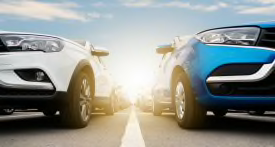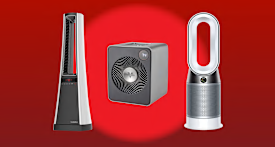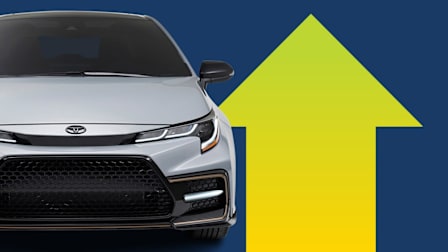How to Test-Drive a New or Used Car
The best test drive starts with a solid plan before you get the keys

A test drive is your only chance to evaluate a vehicle before you buy it. In most cases, you’ll have a half hour tops to judge how a vehicle performs and whether it meets your needs, all while navigating an unfamiliar route while a salesperson yammers in your ear. If you’re shopping for a used car, you’ll also have to check for any mechanical issues.
Before You Head to the Dealership
Make appointments. Try to schedule test drives back-to-back, so you can compare vehicles more easily. When you call the dealerships, confirm that the vehicles you want to test-drive are in stock and equipped the way you want—if you’re contemplating a base model, it doesn’t make sense to test-drive a fully loaded version with different features and a different engine and/or suspension.
Plan your route. A salesperson or private seller may suggest routes that hide or minimize problems. We recommend finding your own path over different kinds of road surfaces and in various conditions, both city and highway. Try driving over speed bumps or through a rutted parking lot. Drive as long as possible—at least 30 minutes. If you don’t know the area, drive the route in your own car before you get to the dealership so you can focus on the test drive instead of the next turn.
Bring a friend. They can help you stay focused on this checklist. If a salesperson comes along for the ride, your buddy can deal with the small talk while you concentrate on the vehicle.
Grade your current vehicle. Make a list of the things you like and dislike about it: performance, comfort, features, fuel economy, controls, and any idiosyncrasies. Does the seat give you a backache on long trips? Is there too little storage space? Are there cup holders that don’t hold drinks securely? Which tech features does your car lack? Put down all your gripes—large and small—so that you don’t overlook those things in the new car.
Before You Drive
Find out if your car and phone get along. Connect your car with both a cable and Bluetooth, then see how easy it is to make calls and play your music. (Don’t forget to delete your profile when you’re done.) Most new cars have Android Auto and Apple CarPlay, so ask for a demo. If you like how they display your phone’s maps on the screen, you can save money and skip optional built-in navigation.
Check for safety features. The window sticker will show if a car has the three features that CR thinks ought to be standard: automatic emergency braking (AEB) with pedestrian detection, forward collision warning (FCW), and blind spot warning (BSW). Then spend time with the car’s onscreen menus to see whether they let you customize these features. For example, can you easily turn off lane keeping assistance (LKA) without turning off BSW?
Get comfortable. Explore all the adjustments for the seats, steering wheel, and side-view mirrors. Make note of how much headroom you have, as well as visibility out the back window. Can you adjust the seat belt height so it’s not annoying? Are the seat cushions too soft or too firm? You should be able to make the interior fit you like a glove.
Measure twice, buy once. Bring along items you frequently carry with you: the dog crate, sports equipment, the fold-up stroller, and summer camping gear. And didn’t your daughter say she wanted to learn to play the tuba? Investigate whether the seats fold down flat for easy loading. Inspect the glove box and center console; some cars lack available space for a purse. If you have a small garage or are buying a very big vehicle, make sure it fits. We’ve heard horror stories of people who had to return their new trucks because their garages weren’t big enough.
Bring the family. Bring everyone who will use or spend lots of time in the car—including kids and grandparents—to make sure the space works well for them. If you’ll have little kids, teens, or elders as passengers, pay special attention to the rear seats. Are they easy to get into and out of? How is the headroom? Is there sufficient legroom?
Try out the controls. Try the tasks you do every day—changing radio stations, adjusting the heat, entering a destination into the navigation system. Are they straightforward or are they hidden deep within convoluted onscreen menus, which will be distracting as you drive? Can you perform common functions using the controls on the steering wheel?
On the Road
Get a sense of ride comfort. Take the opportunity to drive over a stretch of imperfect pavement. The better cars have suspensions that swallow up pavement flaws without sharing them with the vehicle’s occupants. They feel tight and controlled over bumps while quickly regaining their composure.
Soft suspensions feel pillowy over holes and ruts but allow the vehicle body to wallow up and down a bit after a large bump. Sporty cars usually have a firm ride, often a trade-off for their better handling characteristics, which can get fatiguing on longer drives. Some cars, especially small ones, have a “busy” ride, which means the body makes constant little jittery motions up and down or side to side. Avoid that if you can.
Evaluate the acceleration. It’s a scary feeling when you need acceleration now to pull out into traffic but the engine feels unwilling—or unable—to deliver. So make sure you try a quick acceleration run from a stop and a rolling merge into fast freeway traffic. You want to be able to maintain highway speeds without flogging the car. If the engine has to scream to get you up to highway speed, look elsewhere.
Strong, dependable acceleration is one part engine power, one part effective transmission. Try climbing a steep hill to note whether the transmission downshifts smoothly and how the engine responds. You shouldn’t feel any clunks or harsh, abrupt shifts. There should be seamless power delivery without any hiccups.
Hit the brakes. During your drive, pay attention to how the brakes feel. Are they responsive without being too touchy? Braking is hard to evaluate thoroughly without professional help, but you can do a basic assessment. Just make sure to find a deserted space and warn the salesperson in advance.
Try to get a sense of how the vehicle responds to soft and more forceful braking. It should be smooth and progressive. Grabby brakes that suck out your eyeballs or brakes that feel as if you’re pushing into a bowl of oatmeal don’t help driver confidence. The brakes on hybrid and electric cars may feel different because they incorporate mechanisms to capture braking energy to charge the battery. We’ve found that they take some time to get used to, so don’t judge too harshly on your first try.
Put steering and handling to the test. Good steering should feel easy and controllable through turns—not so quick that it feels darty and not so slow that it takes a lot of turning to make a maneuver. You should get "feedback" through the steering wheel: A good system will tell you what the wheels are doing on the road. Lesser systems feel numb and disconnected from the wheels.
Try parallel parking and doing a K-turn to evaluate the turning radius. When driving, consider how the car responds to quick maneuvers. Check whether it tracks well when driving straight ahead or whether it requires small, continual corrections. Because the vehicle’s response to quick steering maneuvers is a key factor in avoiding a crash, it’s important to be comfortable with the way your vehicle reacts. Just don’t play race car driver. A test drive isn’t the time to push an unfamiliar vehicle to its handling and braking limits. You can rely on our avoidance maneuver results instead.
Be quiet and listen. At one point during the test drive, turn off the radio and close all the windows so that you can hear what is going on, especially at highway speeds. Is the engine loud during cruising or only when accelerating? Does a hybrid car suddenly get louder when the gas engine kicks in? Is there excessive wind noise? Side mirrors are a big source of wind noise, as are roof rails on SUVs and wagons. Tires can be another source of noise. High-performance tires on cars and off-road tires on SUVs and pickup trucks tend to create the most noise. Though annoying, this noise is often a big part of the ownership experience, and people who gravitate toward these vehicles are usually not bothered by it. But the test drive is a good way to find out your tolerance level.
Check your visibility. This can vary greatly, even among similar vehicles. But you can tell which ones have the best visibility during your back-to-back drives. Don’t forget to check rear visibility when backing up, and the size of the rear blind zone. Backup cameras are just part of the rear-visibility equation. They shouldn’t have to compensate for thick roof pillars and small windows. If you can, try a test drive after dark. This way you’ll be able to tell how well the headlights perform; which switches, gauges, and controls are lighted for nighttime use; and whether there are any annoying reflections in the windshield.
Don’t fall in love. A new car is likely to overly impress you because it’s better than the one you’re driving now. It’s important to compare it with other new vehicles that interest you rather than with your current car. The more vehicles you test-drive, the better perspective you’ll develop.




















